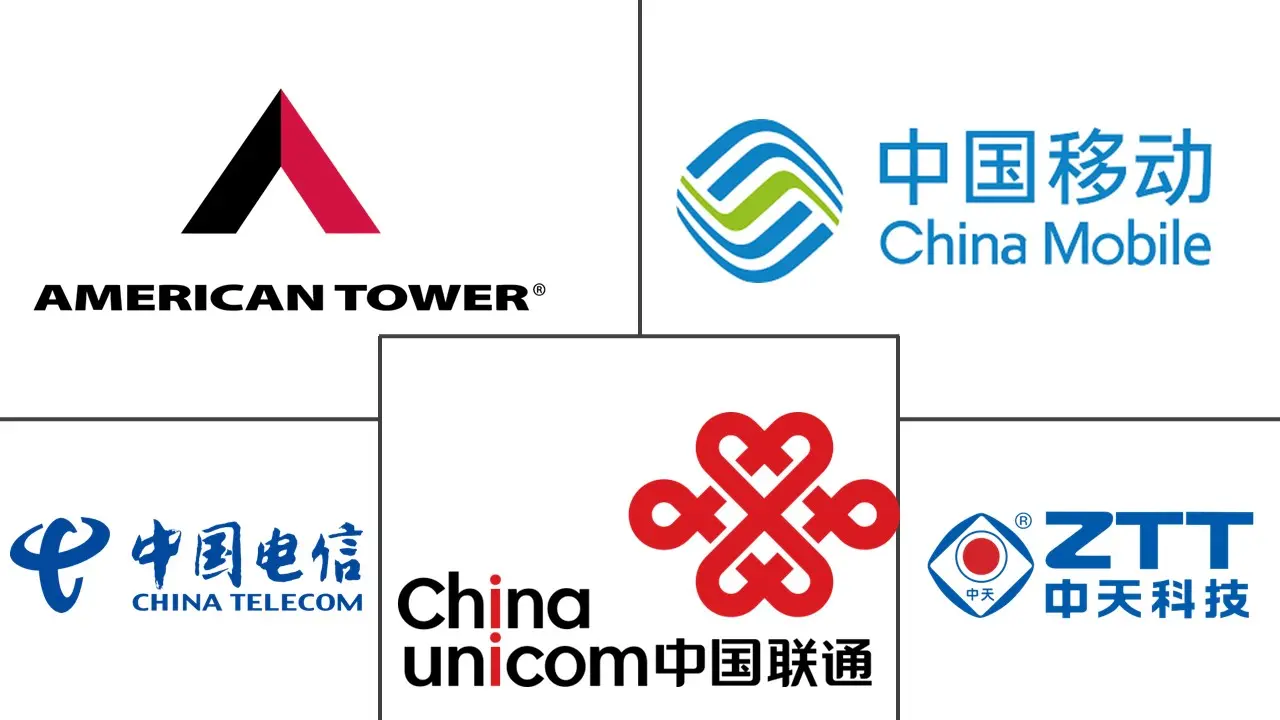Market Size of China Telecom Towers Industry

| Study Period | 2019 - 2029 |
| Base Year For Estimation | 2023 |
| Market Volume (2024) | 2.22 Million units |
| Market Volume (2029) | 2.33 Million units |
| CAGR (2024 - 2029) | 0.94 % |
| Market Concentration | Medium |
Major Players
*Disclaimer: Major Players sorted in no particular order |
China Telecom Towers Market Analysis
The China Telecom Towers Market size in terms of installed base is expected to grow from 2.22 Million units in 2024 to 2.33 Million units by 2029, at a CAGR of 0.94% during the forecast period (2024-2029).
- China has been at the forefront of the development of the 5G industry in the region. China is accelerating the rollout of 5G owing to its top-down strategy and capacity to bridge the public-private gap through state-owned businesses. An atmosphere for 5G is being created that has never been seen before, owing to the government's investment and clear road map.
- In certain VATS categories, the government has relaxed limitations on foreign ownership of FITEs (foreign-invested telecom enterprises) since 2014. Under the Closer Economic Partnership Arrangement, these regulations were first implemented in Hong Kong's and Macau's free trade zones and for qualified service providers. Similar easing recently spread across the country.
- Notably, under these latest laws, foreign investors can increase their shareholding in a FITE above the 50% threshold. Even 100% foreign ownership is allowed in some circumstances. This advances the country's 5G development, which fuels the telecom tower industry.
- China has a huge national telecommunications network. A strong increase in the telecom subscriber base has imposed network expansion covering a wider area, thereby creating a need for significant investment in telecom infrastructure. Considering its huge national network, China’s investment in telecom infrastructure over the last few years has extended to a heavy involvement in the market.
- Chinese President Xi Jinping presented his ideas for a digital economy, emphasizing the need for a 5G connection and national data control. The State Council released a new vision for developing the digital economy in the same month, aiming to play a significant standard-setting role for the nation in 6G mobile technology.
- The increasing emphasis on improving internet connectivity to rural areas is one of the major factors driving the deployment and improvisation of the telecom infrastructure in these areas, thereby aiding the market's growth.
- However, telecom towers require an uninterrupted power supply to ensure 24x7 network availability, fulfilled mainly by electricity, batteries, and diesel generators. The environmental impact of telecom towers has always been a significant concern. Radiation from mobile towers has been an important issue, and it is recognized as an unseen and subtle pollutant affecting life forms in multiple ways. Moreover, using non-renewable sources to run power systems, such as diesel, significantly pollutes the environment.

